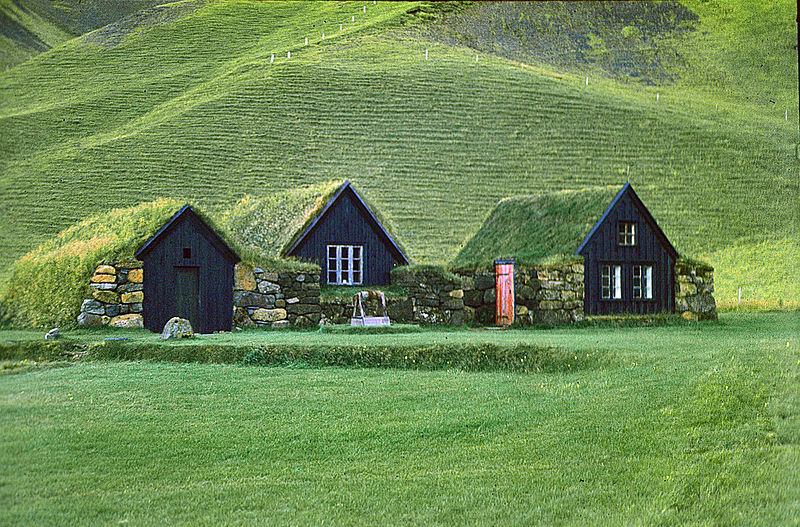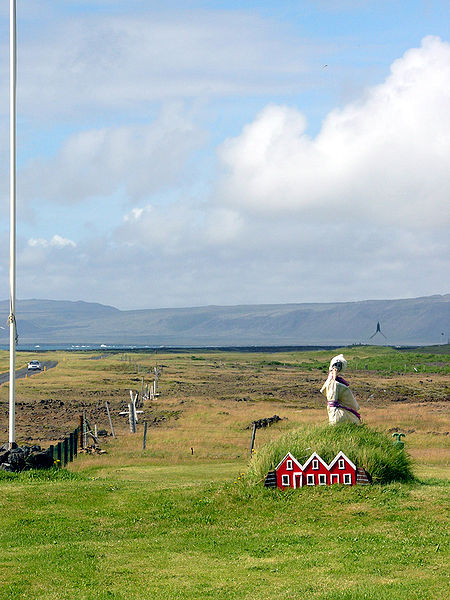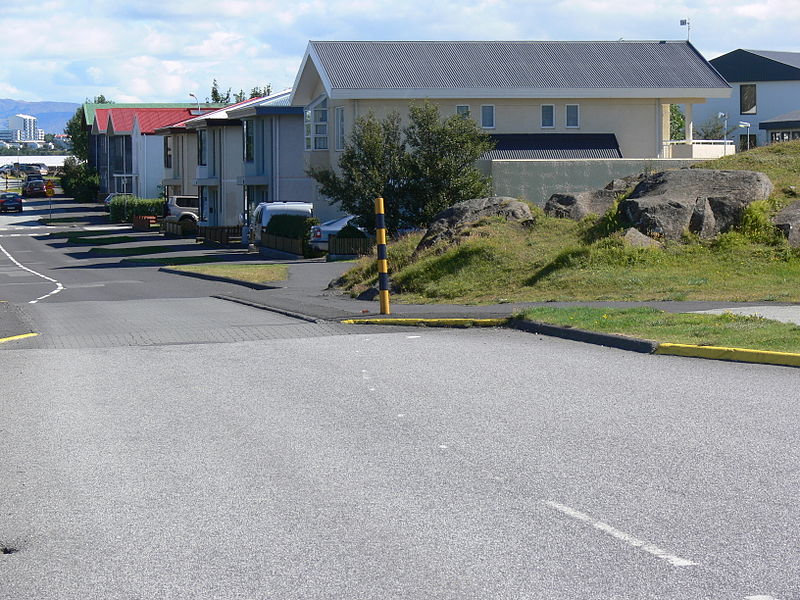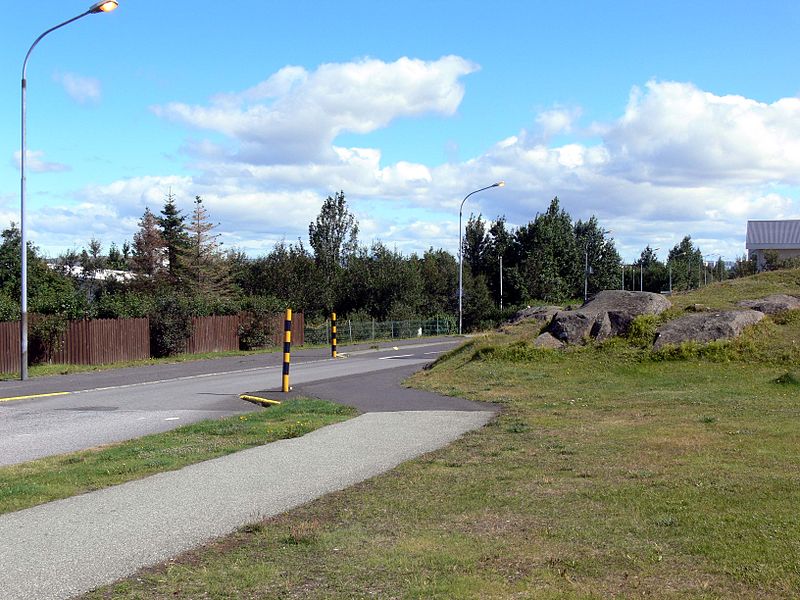Today’s blog post is keeping us in Iceland for a little while longer, and will show you the words for some fruits in Icelandic: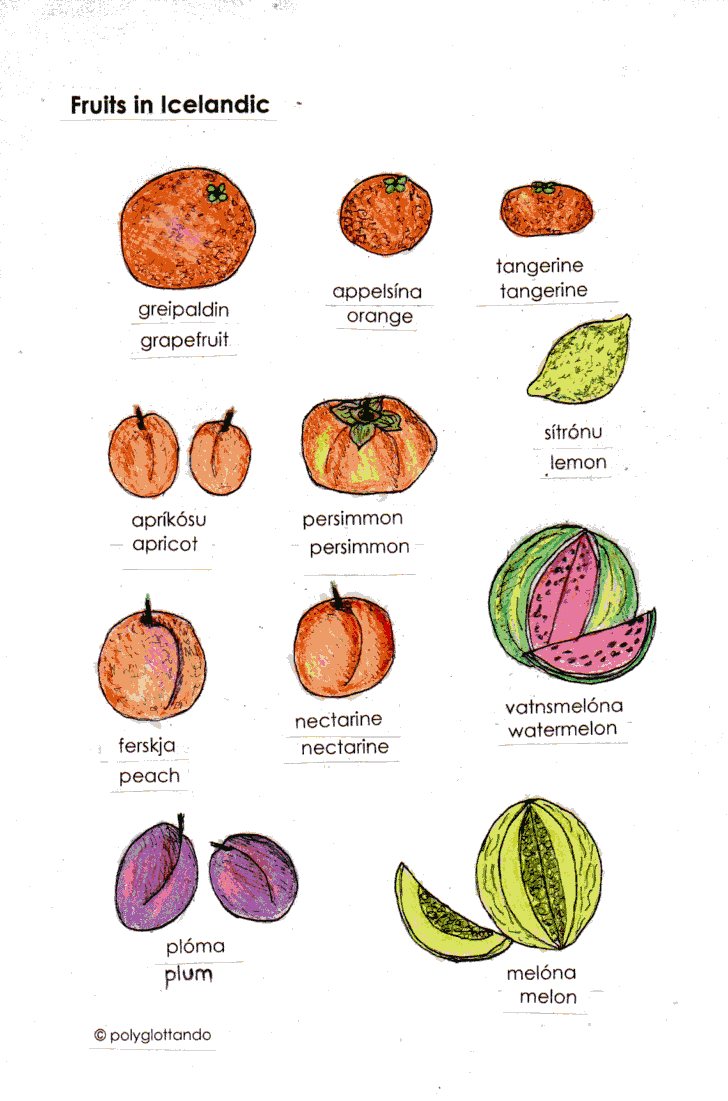
Tag Archives: Icelandic
Focus on culture: Jól in Iceland
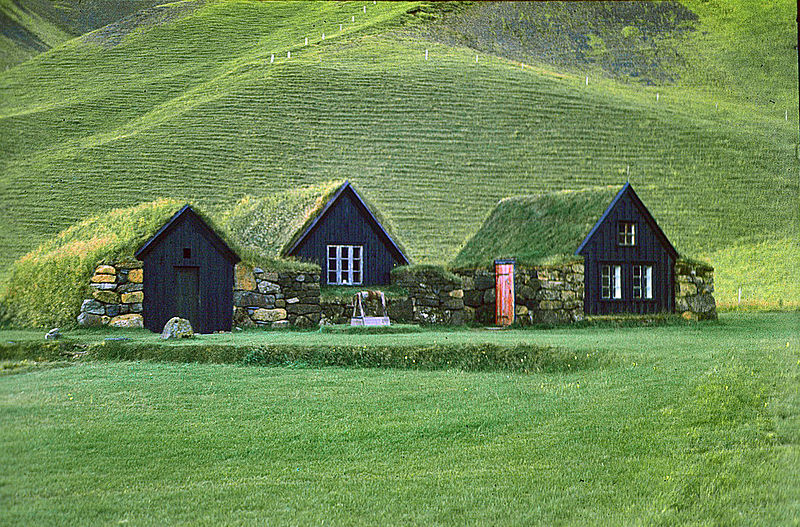 Today’s blog post will take us to Iceland and to some special Icelandic Jól (or Christmas) customs. Jól is based on the Old Norse religious festival called Yule.
Today’s blog post will take us to Iceland and to some special Icelandic Jól (or Christmas) customs. Jól is based on the Old Norse religious festival called Yule.
Jól is celebrated on 24 December, but the Jól season includes events over several weeks: Aðventa (advent, the four Sundays preceding jól), aðfangadagskvöld (Yule eve), jóladagur (Yule day), annar í jólum (Boxing day), gamlársdagur (old years day), nýársdagur (New Year’s Day) and þrettándinn (the thirteenth, and final day of the season).
The main event is Aðfangadagskvöld or Christmas Eve, when people meet for a Yule meal and exchange gifts. However, on the 13 days before December 24 the Yule lads or jólasveinar come into the towns from the mountains to give children that have behaved well small gifts. These they leave in shoes that have been placed near the window or on the window sill during the thirteen nights before Christmas Eve. Every night, a different Yule lad comes to visit, leaving either small gifts for well-behaved children, or a rotten potato if the child was naughty.
The Yule Lads, jólasveinarnir or jólasveinar, are figures from Icelandic folkore who in modern times have taken on the role of an Icelandic version of Santa Claus. There are thirteen jólasveinar. Originally, they were portrayed as mischievous pranksters who would steal from or harass the rural population, but in modern times they have been taking on a more benevolent role comparable to that of Santa Claus. They either wear late medieval Icelandic clothing or Santa Claus costumes. The jólasveinar are traditionally said to be the sons of the mountain-dwelling trolls Grýla and Leppalúði, and are often depicted with the Jólakötturinn or Yule cat.
The jólasveinar have descriptive names conveying their mode of operation and each day, a new lad arrives:
December 12 Stekkjarstaur (‘Sheep-Cote Clod’), harasses sheep but is impaired by his stiff peg-legs; leaves Dec.25
December 13 Giljagaur (‘Gully Gawk’), hides in gullies, waiting for an opportunity to sneak into the cowshed and steal some milk; leaves Dec. 26
December 14 Stúfur (‘Stubby’), unusually short, steals pans to eat the crust left on them; leaves Dec. 27
December 15 Þvörusleikir (‘Spoon-licker’), steals Þvörur (a type of wooden spoon – þvara- with a long handle) to lick them, is extremely thin due to malnutrition; leaves Dec. 28
December 16 Pottaskefill (‘Pot-scraper’), steals leftovers from pots; leaves Dec. 29
December 17 Askasleikir (‘Bowl-licker’), hides under beds waiting for someone to put down their ‘askur‘ (a wooden bowl with a lid), which he then steals; leaves Dec. 30
December 18 Hurðaskellir (‘door-slammer’), likes to slam doors, especially at night; leaves Dec. 31
December 19 Skyrgámur (‘Skyr-gobbler’), loves skyr (an Icelandic cultured dairy product which has the consistency of strained yoghurt, but a much milder taste); leaves Jan. 1
December 20 Bjúgnakrækir (‘sausage-swiper’), hides in the rafters and snatches sausages that were being smoked; leaves Jan. 2
December 21 Gluggagægir (‘window-peeper’), a voyeur who would look through windows in search of things to steal; leaves Jan. 3
December 22 Gáttaþefur (‘doorway-sniffer’), has an abnormally large nose and an acute sense of smell which he uses to locate laufabrauð (leaf-bread, an Icelandic specialty); leaves Jan. 4
December 23 Ketkrókur (‘meat-hook’), uses a meat hook to steal meat; leaves Jan. 5
December 24 Kertasníkir (‘candle-stealer’), follows children in order to steal their candles (which in olden days were made of tallow and thus edible); leaves Jan. 6
The Yule lads are often associated with the Jólakötturinn or Jólaköttur, or Yule Cat, a monster from Icelandic folklore, which is a huge and vicious cat said to lurk about the snowy countryside during Christmas time and eat people who have not received any new clothes to wear before Christmas Eve. The Yule Cat is the pet of the giantess Grýla and her sons, the Yule Lads. In former times, the threat of being eaten by the Yule Cat was used by farmers as an incentive for their workers to finish processing the autumn wool before Christmas. Those who participated in the work would get new clothes as a reward, but those who did not would get nothing and would therefore be preyed upon by the cat. The cat has alternatively been interpreted as merely eating away the food of those without new clothes during Christmas feasts. The tradition has its origin in the 19th century.
On January 6, Icelanders celebrate Þrettándinn (the thirteenth of jól), the last day of Christmas. It is celebrated with elf bonfires and elf dances. Families come together to have dinner and light fireworks. People also go into a corner of their houses and shout out the following folklore poem to drive out evil spirits and invite good spirits and elves:
- Komi þeir sem koma vilja (those come who want)
- Fari þeir sem fara vilja (those go who want)
- Mér og mínum að meinalausu (neither hurting myself nor my family)
Another Icelandic jól custom is the preparation of laufabrauð or ‘Leaf-bread’, which a kind of very thin pancake with a diameter of about 15 to 20 cm (6 to 8 inches), which is decorated with leaf-like, geometric patterns and fried briefly in hot fat or oil. Here is a video showing how it is made: https://youtu.be/OCeUnjax-7w
Here is a recipe for Laufabrauð (‘leaf bread’): http://jol.ismennt.is/english/laufabraud-joe.htm
Icelandic: Different words for snow
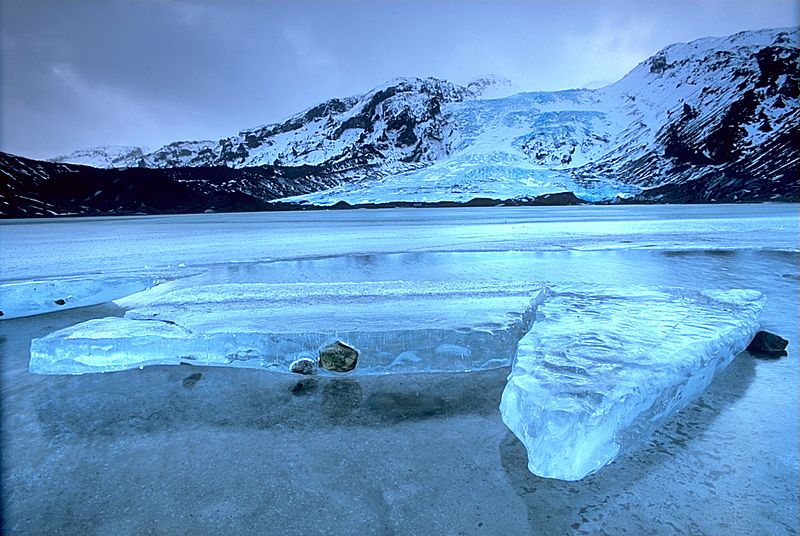
Author: Andreas Tille via Wikipedia Commons Eyjafjallajökull
Since it is now winter in the Northern hemisphere, today’s blogpost will take us to the very North of Europe, namely to Iceland (or Ísland), and I will share some Icelandic words for different types of snow. 🙂
snjór or snær = snow
hjarn = crust of snow, or snow that does not melt in summer
lausamjöll = powder snow
mjöll and ný snævi = new-fallen snow
krap = slush
fönn = drifted heap of snow, snow-wreath, or snow that does not melt in summer
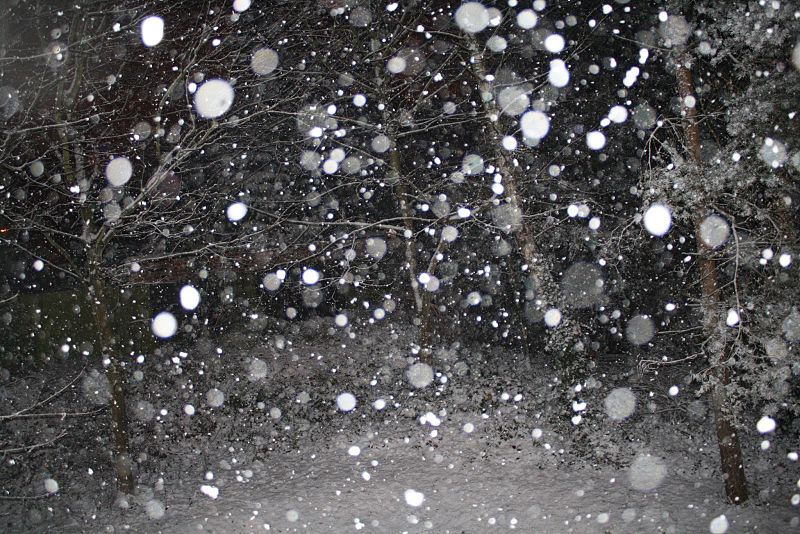
Author: Sb2s3 via Wikipedia Commons
There are also different words for different types of snowfall in Icelandic:
snjókoma or fannkoma = snowfall
snjómugga = a small snowfall
hundslappadrífa = very heavy snowfall with large snowflakes in calm weather
kafald or kóf = thick fall of snow
ofanbylar = snowfall in a wind
skafrenningur = drifting snow
hraglandi = sleet, or cold drizzling shower
bylur or hríð = snowstorm
drífa = snow-drift
él = a sudden fall of snow or hail, or hailstorm
fjúk = drift, drifting snow-storm
Icelandic: Elves and some survival phrases
Today’s blog post is taking us to the far North of Europe, namely to Iceland, the land of geysirs and volcanoes, sagas and eddas, Vikings, and of álfar (elves). 🙂 The elves living in Iceland are also known as Huldufólk, which derives from huldu– ‘pertaining to secrecy’ and fólk ‘people, folk’. There are said to be 13 different types of elves living in Iceland, who have the same size and the appearance of humans, but are invisible to most humans. Building and construction projects sometimes have to be altered because they would damage or disturb the rocks and places where elves are said to reside. Elves usually live in mounds and like dancing, but dislike electricity, churches and crosses, and one should not throw stones in Iceland because of the possibility of hitting elves. Precursors to the Huldufólk date back to the writings of Snorri Sturluson and to skaldic verse. The legends surrounding elves are an example of the intangible and oral heritage of Iceland. In the picture below, you can see some álfhól (elf houses):
The Huldufólk are also part of Faroese folklore, where they are said to have black hair and to wear grey clothes. The Faroese language is closely related to Icelandic.
Here is a photo of a road which had to be built around rocks where elves are said to live:
Here are some survival phrases in Icelandic:
Halló Hello
Bless Goodbye
Takk fyrir! Thank you
Þakka þér kærlega fyrir! Thank you very much!
Það var ekkert You are welcome
Fyrirgefðu Sorry
Afsakið Excuse me
Hvað heitir þú? What’s your name?
Ég heiti…. My name is…
Hvernig ert þú? How are you?
Allt fínt. En þú? Fine. And you?

